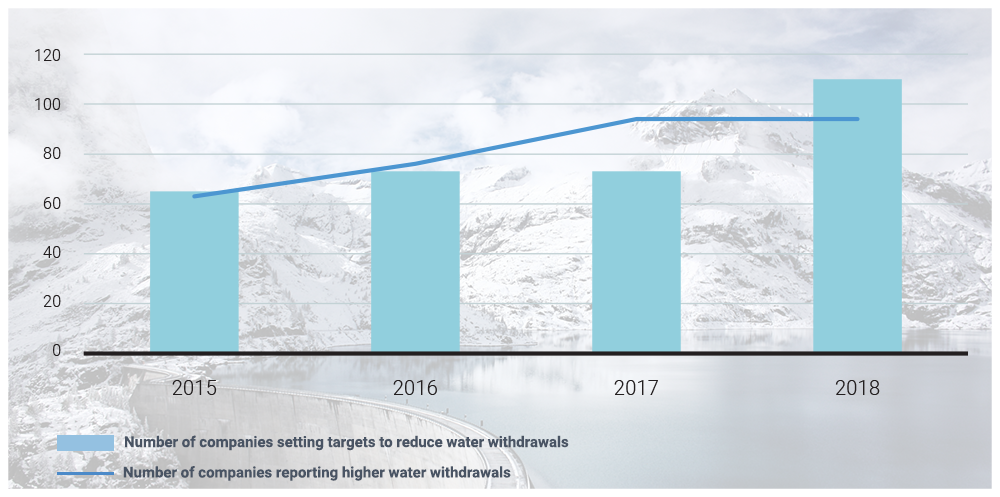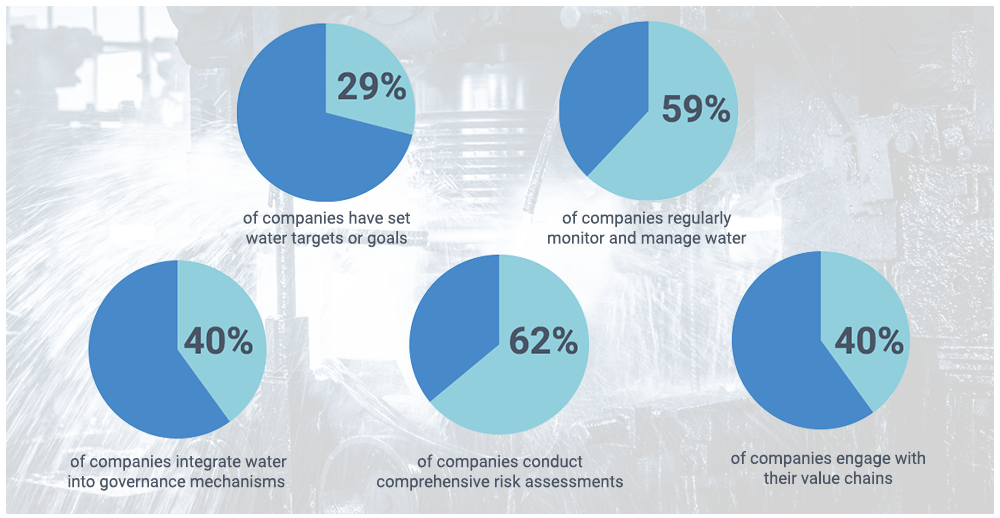Treading Water: Global Water Report 2018
Water is the lifeblood of the global economy. And with 19% of water withdrawals coming from industry, and a further 70% from agricultural supply chains, companies have a massive role to play in meeting our global water goal - SDG6. There is also a clear economic imperative for action: in 2018 water-related financial losses reached US$36 billion.
Yet, despite a growing awareness of water risks companies are not yet reducing withdrawals
(Companies' reported water withdrawals compared to 2017 at 'at risk' facilities)
As shown above, an unprecedented number of companies reported water facilities 'at risk' through CDP. However, this growing awareness of water risks is not yet correlating to companies lowering their water withdrawals in these hot spot areas.
This year, CDP analyzed a group of 296 companies who have been consistently responding to us over the last four years. Of this group, 75% now report water risk exposure, compared to 70% in 2015. The majority of risk reported are physical (76%), relating to water scarcity and declining water quality. Yet, despite almost a doubling of the number of companies setting targets to reduce water withdrawals over the four years, there has also been an almost 50% rise in the number of corporates reporting higher water withdrawals. This worrying trend holds true both for company wide withdrawals but also for those at sites facing substantial risks.

The rise in withdrawals is most pronounced in the food, beverage & agriculture, manufacturing and mineral extraction sectors, as well as in Asia and Latin America.
In 2018, 650 institutional investors invited some 1,536 of the world's largest publicly listed companies to disclose their water-related information through CDP. 783 responded. The companies are demonstrating some progress towards key aspects of better water management

But this action is not enough. CDP is raising the bar on corporate leadership - demanding even more from companies to make it onto the CDP Water A List - and last year just 31 companies met the challenge. Those companies leading the way included global drinks company Diageo, French beauty giant L'Oréal and Brazilian petrochemical company Braskem. The vast majority of companies (752) still have a way to go.
Delivering a water secure future not only means better water management, but, importantly, better business management. Companies must not only show that they are regularly monitoring and managing water, undertaking comprehensive risk assessments, and assessing how water issues could impact financial performance. To deliver real change companies also need a genuine, strategic response to water risks.
One such action is offering board incentives to better manage water issues. But this is an area where companies continue to under perform. Of the 283 high-impact companies (food, beverage and tobacco, metals and mining, oil and gas, electric utilities and chemicals sectors) responding to CDP in 2018, just 31% currently have incentives in place to reduce water withdrawals, and just 15% have incentives tied to the avoidance of pollution.
Delivering SDG 6 is possible. But to succeed, companies must step up and embed the reality, risks and opportunities of a water secure future into their business, financial and policy decision making.
